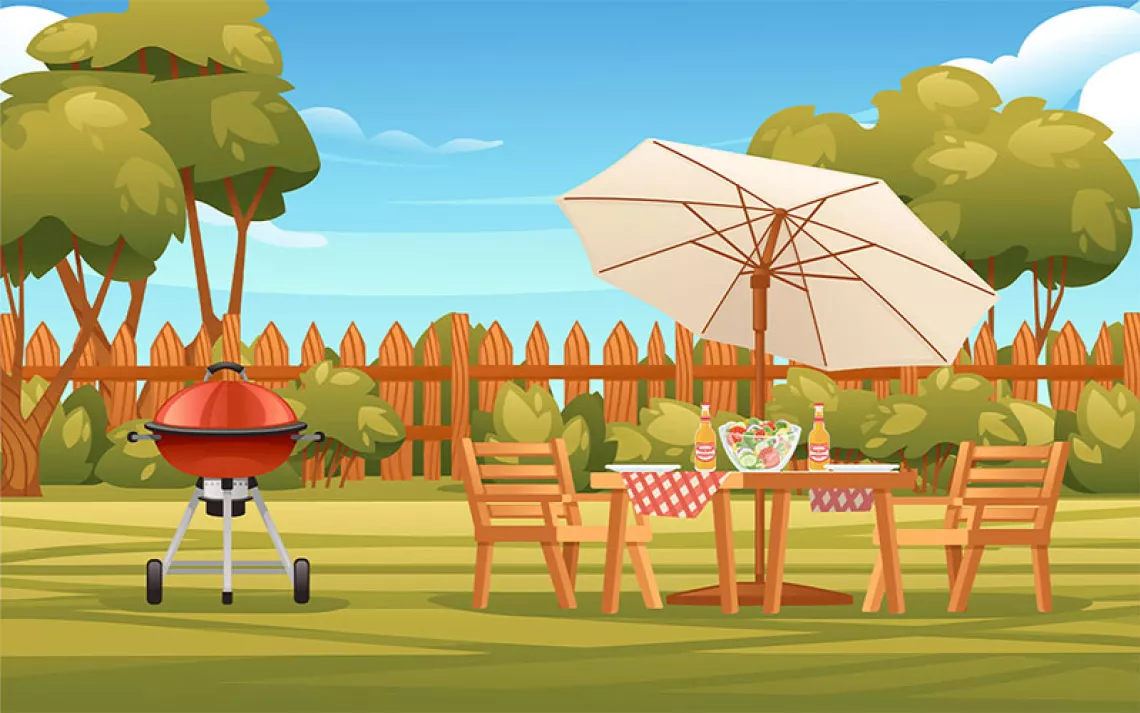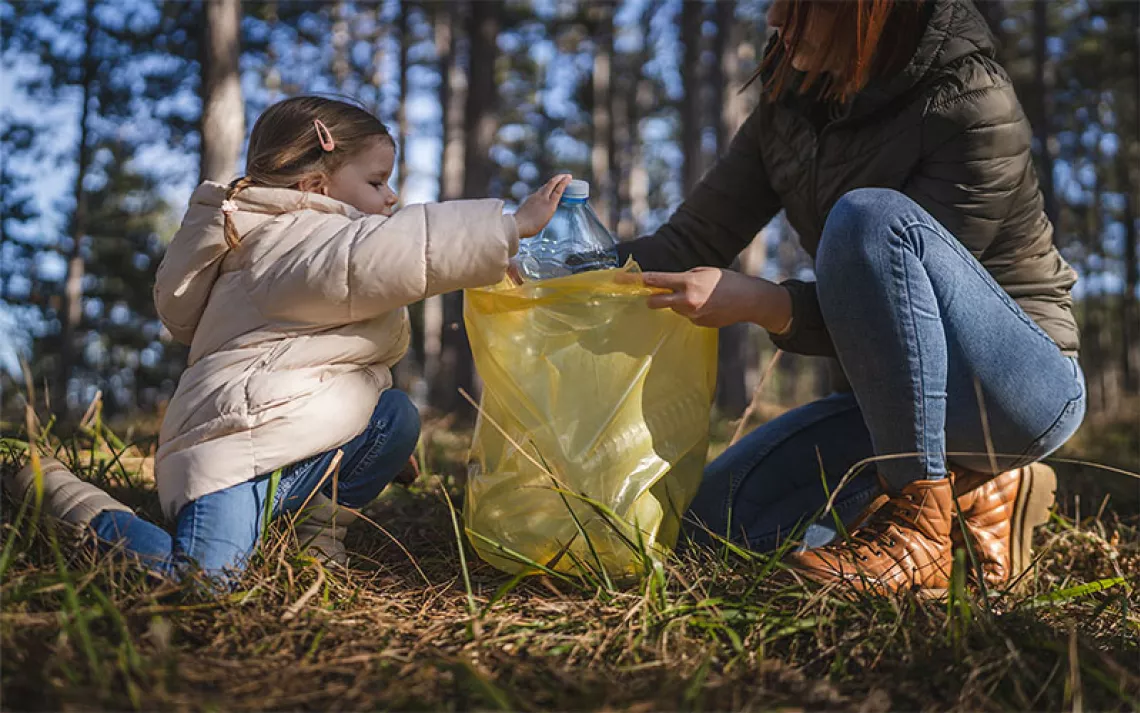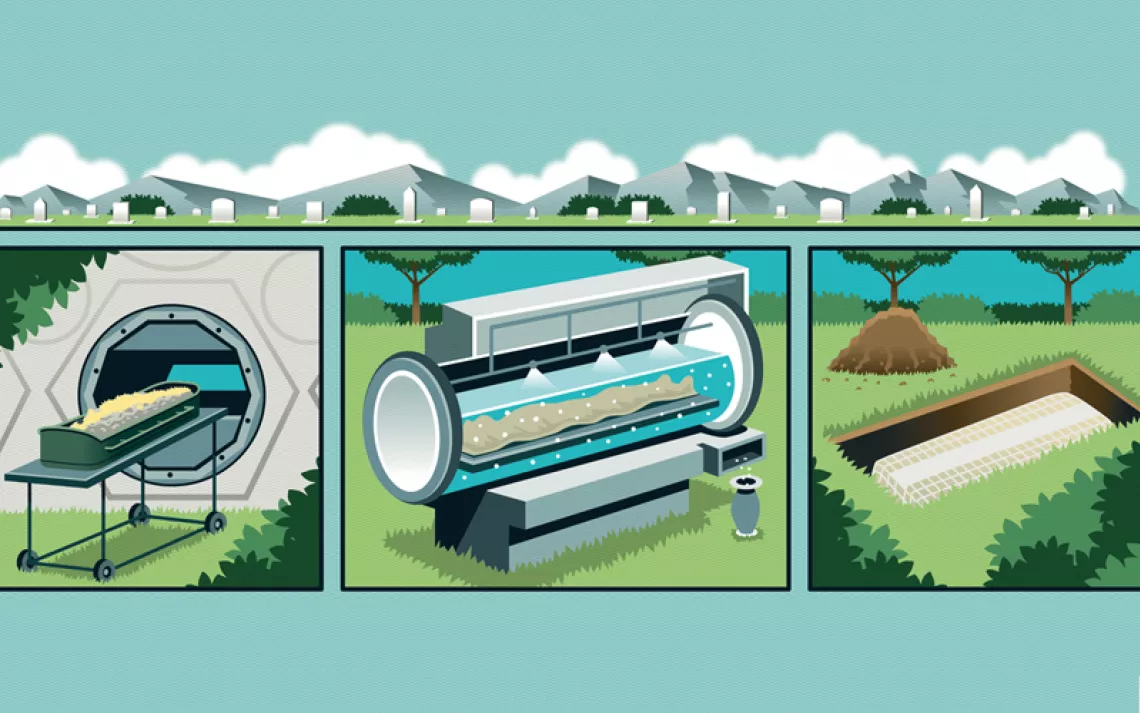Zeroing Out Zero Waste
A conversation with David Allaway, recycling heretic

Steel cans are very recyclable—but the environmental impact of a plastic laminate pouch that goes to the landfill is far lower. | Photo by iTle/iStock
David Allaway is a senior policy analyst for the Oregon Department of Environmental Quality and the coauthor of a controversial report that challenges many long-held assumptions about recycling and environmental impacts. (For more, see "Stop Obsessing About Recycling.") To help us further unpack its findings, he agreed to answer some questions.
*
Edward Humes: Your study has surprised the world by showing that for single-use packaging containers and foodware, the recyclable choice is not always the environmentally superior choice—that, in fact, about half the time it is worse for the planet. It didn’t occur to most of us to question the assumption that recycling was always the greenest option. What led you down this path?
David Allaway: Back in 2004, we commissioned our first life-cycle assessment to evaluate methods of using less packaging. We asked, "Is it better to ship in a recyclable cardboard box or a lightweight shipping bag?" The shipping bags might be paper, might be plastic, or might be a plastic-paper blend—typically difficult to recycle. The cardboard boxes are easy to recycle. We had no idea what the answer would be.
We found that the shipping bags almost always resulted in lower environmental burdens than the cardboard boxes, simply because they used so little material. This is the first time we had seen some analysis, some quantitative evidence, that maybe recyclability was not a universal good. In 2008, we commissioned two more studies that also showed that popular attributes such as recyclability and compostability weren’t always the lowest-impact options. And then we just sat with this discomfort for about 10 years. But this inconvenient evidence just ate at me.
Then in 2016, I was at a conference of the Sustainable Packaging Coalition and heard a number of executives from Fortune 500 companies take to the stage and say that they were no longer doing these sorts of life-cycle assessments for packaging. Their marketing departments didn’t appreciate the complexities, and their customers were demanding that the packaging just be recyclable. So that’s what they were going to do—just make all packaging recyclable and no longer fuss with understanding the carbon footprint or the amount of water consumed or the toxicity impacts. Just make it all recyclable, placate the customers, and all would be good.
That really didn’t sit well with me. I started thinking of these studies we had done 10 years earlier, and I got to wondering: Has anyone ever gone through the hundreds of life-cycle assessments (LCAs) out there systematically and asked, "Do these popular attributes of recyclability and compostability consistently and reliably point in the direction of low-impact materials?" That was the start.
How did you go about answering that question?
Think of it this way: What if you are a packaging designer or a brand owner or a customer and you’re choosing between two different materials? What if you could get your wine in a glass bottle or an aseptic carton—similar to a juice box. The glass bottle typically contains recycled content. The aseptic carton rarely contains any recycled content. When you compare dissimilar materials, is recycled content a meaningful indicator—a proxy—for low environmental impact? Almost everybody uses such attributes as proxies. We assume, we intuit, that if you buy a material that contains recycled content or is recyclable or compostable or bio-based, then it’s inherently eco-groovy, it’s an ecofriendly choice. That’s what this study is evaluating. Is that assumption valid? Are these attributes reasonable proxies?
What the data tells us is that if you are comparing different packaging materials that perform the same function, the one that has more recycled material does not necessarily have the lowest environmental impact. Sometimes it does have the lowest impact overall, sometimes it doesn’t. In slightly more than half the comparisons, it doesn’t. And that’s what runs contrary to popular wisdom.
Can you give an example?
So you are a reader of Sierra magazine and you’re standing in an aisle at Whole Foods, choosing between tuna in a plastic pouch versus tuna in a can. The can is steel and highly recyclable. The pouch is a plastic laminate that is difficult to recycle and likely will be disposed of in a landfill. And you say to yourself, "I’m going to buy the item that is easier to recycle, because recycling is good and garbage is bad." You're making decisions based on one piece of the life cycle.
But in almost every measure of environmental impact, from climate and eco-toxicity and pollution and so forth, the pouch has lower impacts. As long as it ends up in the landfill and not the ocean, the pouch is the better choice. What our study tells us is that if you base your choice solely on the attribute of recyclability, half the time you will choose the higher environmental impact. This tells us recyclability is not a very useful indicator if we are trying to avoid environmental harm.
Are you saying we should start recycling less and landfilling more as a green strategy, or that we should continue recycling but be more selective about it?
Recycling done well is a good thing. Nationwide we’re at about a 30 percent recycling rate. There have been studies that have shown that if we can get to 50 or 60 percent, there are more environmental benefits to be had. There are lots or recyclable, high-quality, recoverable materials currently being burned or buried that we should be recycling. So we need more recycling. We need better recycling. The problem begins when some cities or states or the advocates and industry take a leap of faith and say, "We should make everything recyclable. And then we would recycle more and achieve the benefits of recycling more materials. Because that would be entirely eco-groovy."
This is intuitively entirely reasonable. But it fails to look at the big picture. It’s simply taking solid-waste avoidance and putting it on a pedestal, saying, "That’s the problem we have to solve, the problem of garbage." But the problem of garbage is this country is very small when you compare it to the environmental impact of producing all the stuff that becomes garbage. If our higher-order goal is to conserve resources and reduce pollution, then always, always, always trying to keep stuff out of the landfill isn’t always the best way to achieve those goals.
You have said we need to stop thinking about maximizing recycling and start thinking about optimizing recycling. How do we do that?
What’s driving this at the city and county and state levels are landfill-avoidance goals. These are really powerful. They motivate and inform a lot of policy, consumer education, and programs. They assume anything that goes into the landfill is bad and anything we can do to keep stuff out of the landfill is good.
We need a more refined evaluation framework. We should set goals around conserving resources and reducing pollution and then design solid-waste programs to achieve those goals. If I could do one thing, it would be to move away from weight-based goals that say we need to keep everything out of landfills.
I can understand that this causes some discomfort. But at the end of the day, to quote Jerry Brown, being on the wrong side of science is rarely a winning proposition. The environment doesn’t care what we think. It cares what we do.
You have suggested that the emphasis on recycling materials, rather than reducing their impact while they are being produced, is a form of greenwashing. Can you explain that?
There are some folks in industry who know that our priorities are the opposite of where they need to be to reduce environmental impacts, but they like it the way it is, because it’s a whole lot easier for them to manage this way. We’ve externalized responsibility for waste collection to government in this country: So as long as the public’s attention remains focused on the end of a product’s life, then that’s not industry’s problem, it’s government’s problem. But the moment we start saying, "Hmmm, most of the impacts are on the production end and industry needs to reduce those," then industry’s on the hook. So it encourages people to obsess on recyclability and compostability. It’s a convenient red herring. It’s greenwashing.
What about the problem of marine plastic pollution? Isn’t more recycling a potential solution, a way of keeping plastic out of the water?
Recycling doesn’t keep plastic out of the ocean. Landfills do. We don’t dump garbage in the ocean; we dump garbage in landfills. And though we love to hate them, landfills serve the function they were created and designed for, which is to contain garbage and keep it out of the environment. Very little garbage in the US ends up in the ocean.
What can be done to address the problems with recycling policies highlighted by your study?
There is no way average consumers can sort this out on their own. Industry and government need to use environmental metrics to identify and favor materials that are bio-based and recyclable and low impact. But let’s start with low impact, not recyclability. Because right now we’ve turned everything on its head and are making decisions around recyclability and compostability and not considering the actual impacts of reduction.
The largest source of greenhouse gas emissions from consumption—41 percent—is associated with the purchase of materials, including food, packaging, and durable goods. Of that 41 percent, 1 percent is from landfilling. The other 99 percent of those greenhouse gas emissions is upstream of the consumer, primarily in manufacturing. That’s what the science tells us. We need to explore meaningful solutions to those production impacts.
For example?
Concrete is a very pollutant- and greenhouse-gas-intensive material. There are easy ways to reduce it by swapping out cement for other materials when you make concrete. You could significantly reduce emissions by 20, 30, 40, 50 percent. It’s a really easy win, a low-hanging fruit. Yet hardly any cities are working on it—they’re too busy banning straws.
I’m sorry, I’m sharing some frustration. I see an environmental crisis unfolding and I see a lot of really good intentions and they are focusing on really small solutions. Who wants to talk about concrete? There are no videos that tug at your heart strings, like the one of that straw up a sea turtle’s nose or the albatross full of plastics. No turtles are dying of concrete. Except they are. Because of the impact on climate change. But you can’t see it.
It seems you are playing the Socratic role of gadfly to environmental conventional wisdom here. What do you hope will come of this study?
Everyone talks about reduce, reuse, recycle. But they give lip service to reduce and reuse. My whole career has been about demonstrating the viability and importance of moving up the hierarchy—doing recycling but also prevention and reuse. That led to this new frontier of getting out of the solid-waste box altogether so we can start looking at the full impact of materials across their entire life cycles. We’re the pioneers here, but there are some other states that are thinking about it. It’s a pretty significant change, to consider the full life-cycle as opposed to just garbage. That's the outcome I want to see. At the end of the day, I want to know that I moved the needle on reducing environmental impacts.
This interview has been edited for length and clarity.
 The Magazine of The Sierra Club
The Magazine of The Sierra Club



